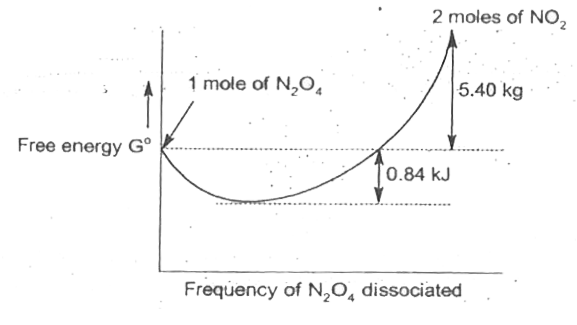The free energy change the due to a reaction is zero when
The reactants are initially mixed
A catalyst is added
The system is at equilibrium
The reactants are completely consumed
The correct Answer is:C
Step by step video & image solution for The free energy change the due to a reaction is zero when by Chemistry experts to help you in doubts & scoring excellent marks in Class 12 exams.
Updated on:21/07/2023Topper's Solved these Questions
- CHEMICAL KINETICSBook:CENGAGE CHEMISTRY ENGLISHChapter:CHEMICAL KINETICSExercise:Exercises Assertion-Reasoning
Explore 22 Videos
- CHEMICAL KINETICSBook:CENGAGE CHEMISTRY ENGLISHChapter:CHEMICAL KINETICSExercise:Exercises Integer
Explore 15 Videos
- CHEMICAL KINETICSBook:CENGAGE CHEMISTRY ENGLISHChapter:CHEMICAL KINETICSExercise:Exercises Multiple Correct
Explore 33 Videos
- CARBOXYLIC ACIDS AND THEIR DERIVATIVESBook:CENGAGE CHEMISTRY ENGLISHChapter:CARBOXYLIC ACIDS AND THEIR DERIVATIVESExercise:Exercises Archives (Analytical And Descriptive)
Explore 34 Videos
- COORDINATION COMPOUNDSBook:CENGAGE CHEMISTRY ENGLISHChapter:COORDINATION COMPOUNDSExercise:Archives Subjective
Explore 18 Videos
Similar Questions
The free energy change due to a reaction is zero when
View SolutionStandard Gibbs free enegry change ΔGΘ for a reaction is zero. The value of the equilibrium constant will be:
View SolutionFor the reaction Ag2O(s)→2Ag(s)+1/2O2(g) the value of ΔH=30.56KJmol_1 and ΔS=66JK−1mol−1. The temperature at which the free energy change for the reaction will be zero is :-
View SolutionThe free energy change ΔG=0, when
View SolutionThe free energy change, ΔG = 0, when
View SolutionA reaction is spontaneous if free energy change ΔG for the reaction is negative . The question arises, how we can explain , the spontaneous reversible reaction. Taking the example of dissociation equilibrium N2O4⇔2NO2(g) the variation of free energy with the fraction of N2O4 dissociated under standard conditions is shown in the figure below.

When 1 mole of N2O4 changes into the equilibrium mixture the value of ΔG∘ is
View SolutionA reaction is spontaneous if free energy change ΔG , for the reaction is negative . The question arises, how we can explain , the spontaneous of reversible reaction taking the example of dissociation equilibrium N2O4⇔2NO2(g) the variation of free energy with the fraction of N2O4 dissociated under standard conditions is shown in the figure below.

When 2 moles of NO2 change into equilibrium mixture the value of ΔG∘ is
View SolutionThe standard free energy change for a reaction is −213.3KJmol−1at25∘C. If the enthalpy change of the reaction is −217.77KJmole−1 . Calculate the magnitude of entropy change for the reaction in Joule mole−1
View SolutionA reaction is spontaneous if free energy change ΔG , for the reaction is negative .
The question arises, how we can explain , the spontaneous reversible reaction taking the example of dissociation equilibrium ,N2O4⇔2NO2(g).
the variation of free energy with the fraction of N2O4 dissociated under standard conditions is shown in the figure below.

The standard free energy change for the conversion of 1 mole of N2O4 into 2 moles of NO2 is
View SolutionThe Gibbs free energy change of a reaction at 27∘C is -26 Kcal. and its entropy change is -60 Cals/K. ΔH for the reaction is :-
View Solution